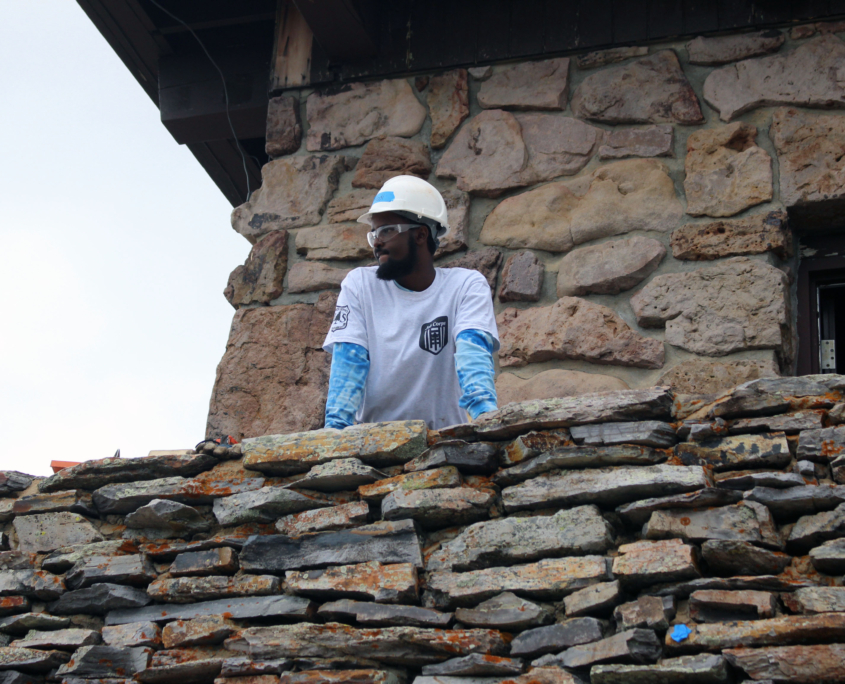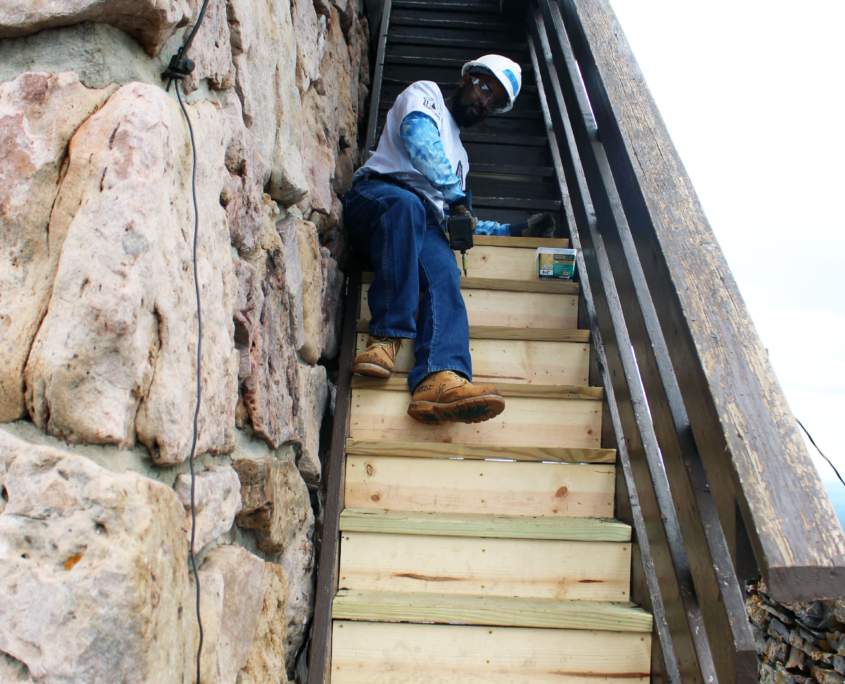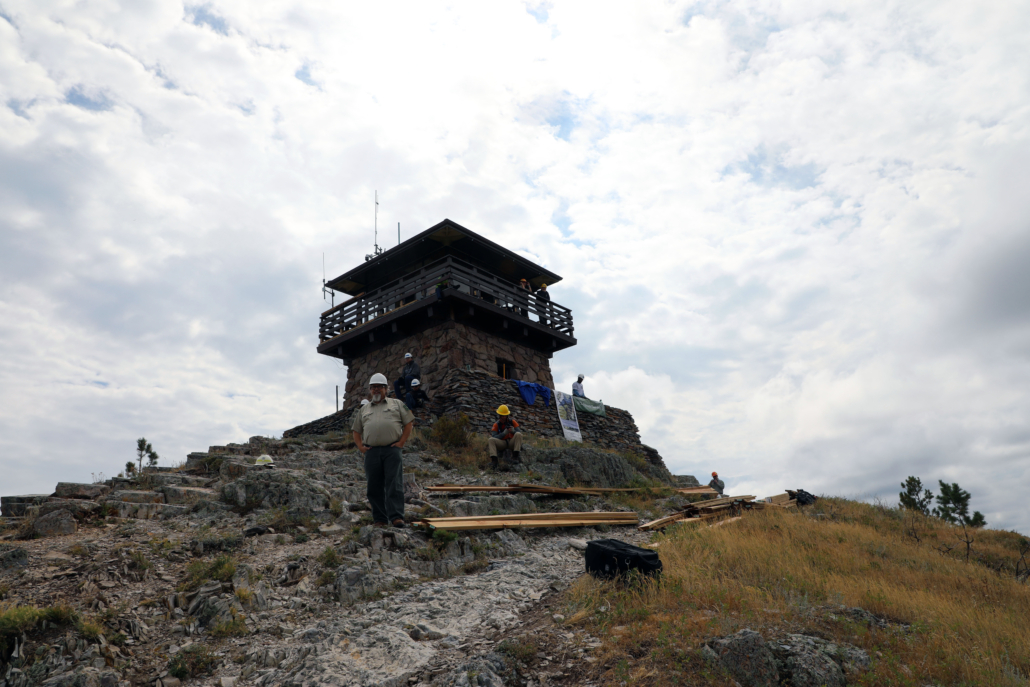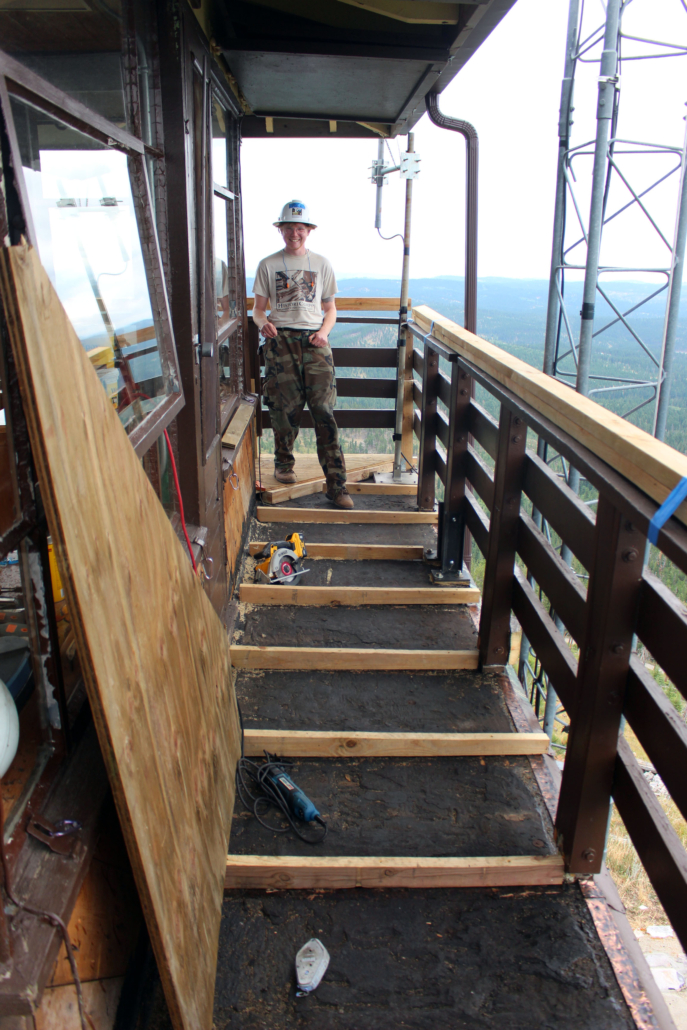Submitted by Alicia Bennett, Public Affairs Officer, U. S. Forest Service Job Corps
Custer Peak is a rocky, conical peak 6,804 ft. above sea level on the Black Hills National Forest. Custer Peak has played host to several Forest Service fire lookouts since 1911, when a wooden platform with a cabin on top of it was constructed. The Civilian Conservation Corps constructed the current wood and stone lookout in 1941 and it has been used as a fire lookout ever since. Over a span of six weeks in early fall, HistoriCorps, Boxelder Job Corps Civilian Conservation Center students, and personnel from the Black Hills National Forest worked to repair the tower’s catwalk, catwalk railing, stairs, and cab structure support based on the recommendations from a 2021 engineering structural evaluation. Thanks to these restoration efforts, this historic structure will provide a vantage point where Forest Service fire lookouts will spot smoke, track lighting strikes, and report weather changes for years to come.

Boxelder Job Corps carpentry student Abdibaset Adiwahab gazes at the horizon from the Custer Peak Lookout on the Black Hills National Forest. USDA Forest Service photo by Scott Jacobson.
Eighteen-year-old Joseph K. Looks Twice, who is working towards his carpentry certification, appreciated the opportunity to refine his skills. “I did not know how to use hand tools before this project. This project helped me learn and refine those skills.” The historical significance of the Custer Peak Lookout and restoration work completed with the assistance of Boxelder Job Corps students Looks Twice, Abdibaset Adiwahab, Seth Ruff, Jaden Hackworth, and Wallace Cook are captured here.
Like many enrolled in Job Corps, Looks Twice enrolled in Job Corps to earn the high school diploma which he knew would be vital to his success in life. “Job Corps gave me a second chance,” he says. “I was a dropout with no job, no future, and without those I was going to fail in what I came into this world to do—which is to help people.” He recommends the program to other young people. “I hope they will take the chance like I did to better themselves and have a better future.”

Boxelder Job Corps carpentry student constructs new stairs for the Custer Peak Lookout on the Black Hills National Forest. USDA Forest Service photo by Boxelder Job Corps helps restore historic lookout on Black Hills National Forest. USDA Forest Service photo by Scott Jacobson.
The Forest Service Job Corps program has a thriving partnership with HistoriCorps to improve historical and recreational sites on national forests and grasslands through hands-on preservation training supervised by HistoriCorps professionals. Students across a variety of trades, including facilities maintenance, painting, cement and brick masonry, welding and carpentry, learn conservation techniques using traditional hand tools through hands-one learning.

Custer Peak Lookout on the Black Hills National Forest. USDA Forest Service photo by Scott Jacobson.
These historic preservation projects are another example of how Forest Service Job Corps students support and conduct work that enhances the nation’s public lands while providing training and pathways to prosperity for underserved youth. The work of Civilian Conservation Centers directly supports Forest Service out-come oriented goals of delivering benefits to the public and excelling as a high-performing agency while sustaining our nation’s forests and grasslands.

Beckett Hunecke admires repair efforts on the catwalk of Custer Peak Lookout on the Black Hills National Forest. USDA Forest Service photo by Scott Jacobson.





































































